 |
|
Welcome to Sonicbomb.com - An illustrated history of nuclear weapons
Despite the end of the Cold War nuclear weapons are by no means obsolete having a powerful effect on international politics and strategic stability to this day. However, much of the history of nuclear weapons remains secret and largely classified by the governments that developed them.
The following pages are overviews of the nuclear weapons programs of the United States, Russia, Great Britain, France and The People's Republic of China. The content on these pages spans from the initial research and development of the first nuclear weapons to overviews of each nation's nuclear arsenal.
Over 2,050 nuclear devices have been detonated between 1945 to 2006. The majority of these tests were weapons development and effects experiments, the purposes of which was to develop a reliable nuclear deterrence for its respective nation. Some of these tests were also for peaceful purposes meant to explore the concept of using nuclear devices for massive earthmoving projects, gas stimulation, and other public works.
Between 1945 and 1963, almost all nuclear testing was conducted in the atmosphere. These devices were detonated on towers, dropped from aircraft, exploded under the ocean, suspended beneath balloons, or launched by rockets. The Partial Test Ban Treaty of 1963 prohibited the testing of nuclear weapons in the atmosphere, underwater and in outer-space. Despite this France and China continued to test in the atmosphere well in the 1970s and 1980s, respectively. Almost half of the nuclear weapons ever detonated were by the United States.
The peak number of global nuclear weapons reached 70,000 in 1986 and non-proliferation treaties and arms control agreements have dramatically decreased this number since. As of 2021 there are an estimated 13,000 nuclear weapons stockpiled by the 5 major nuclear weapons states, 97% of the which belong to the United States and Russia.
|
|
|
USA
|

|
|
Program History |
Testing Database |
Image Gallery |
America was the first country to test a nuclear weapon, and the first and only to use one in war. The US
conducted most of its nuclear tests at the Nevada Test Site (NTS) and on several Pacific islands, Bikini,
Eniwetok, Johnston, and Christmas islands/atolls. A few tests were conducted at the Nellis Air Force Range
and at Amchikta Island in Alaska. Tests were conducted in groups known as "operations" or "test series" which
involved large numbers of personnel and often had a clear set of objectives that needed achieving. Since July
1962, all nuclear tests conducted in the United States have been underground, and most of them have been at
the NTS. Like most nations, the motivation for atmospheric testing was driven by political "sabre-rattling"
as much as the need for actual weapons developement.
|
|
USSR
|
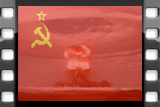
|
|
Program History |
Testing Database |
Image Gallery |
The Soviet Union became the second nation in the world to detonate a nuclear device on 29/8/1949, and was
responsible for the largest ever test with the 50Mt Tsar Bomb in 1961. The USSR conducted it's nuclear tests
at two main locations: the Semipalantisk Test Site in Kazakhstan, and the Northern Test Site at Novaya
Zemlya. Like the US, the USSR detonated a large number of underground tests or PNE's (peaceful nuclear
explosions) under the premise that these explosions could be used in the commercial sector for puposes like
mining. This proved to have little value other than creating large highly radioactive holes in the ground.
The test ID "RDS" refers to the weapon type and "Joe" was the name given them by the US and loosely equates
to the sequential shot number.
|
|
UK
|
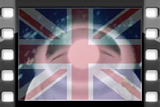
|
|
Program History |
Testing Database |
Image Gallery |
Britain conducted it's first test codename Hurricane, on the Monte Bello Islands just off the west coast of
Australia aboard the HMS Plym in 1952. After the witnessing the US Castle tests in 1954, it became clear to
the British government that if the UK was to retain it's superpower status it would need to develop its own
H-bomb. This led to the Grapple test series in 1957 at Malden Island in the Pacific. The initial results were
disapointing, the designs were successful but had relatively low yeilds. Further testing was required and
under almost insurmountable budget and time constraints, improved designs provided the required results. This
proved to the world and more importantly to the US that Britain was capable of producing an H-bomb. The US
then ammended it's legislation, and the exchange of information between the US and Britain resumed.
Subsequently British designs were abandoned in favour of US weapons due to both financial and political
reasons.
|
|
France
|
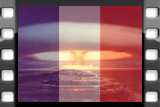
|
|
Program History |
Testing Database |
Image Gallery |
Although France had been a leading nation in nuclear research before World War II, it lagged badly behind in
the years immediately afterward and was largely cut off from the rapid advances made by Britain and America.
The first French nuclear test code-named Gerboise Bleue, was detonated February 1960 at Reggane in Algeria.
This device used plutonium and had a notably high yield of 60-70 kt, larger than other nuclear power had
detonated as its first test. Testing in Algeria continued until 1966 when France's testing program moved to
the Mururoa and Fangataufa Atolls in the South Pacific. Frances efforts to develop thermonuclear weapons came
to fruition in 1968 with the Canopus test over Fangataufa, resulting in heavy contamination. Although most
nations ceased atmospheric testing in the early sixties, France continued atmospheric testing well in to the
mid seventies, and underground testing as recently as 1996 despite heavy protestation.
|
|
PRC
|
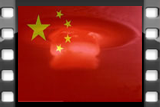
|
|
Program History |
Testing Database |
Image Gallery |
Over the years China invested relatively few resources on developing and deploying nuclear weapons compared
to either the US or Russia, and conducted less than 5% of the number of combined tests by these two
countries. As with many atomic nations, the exact size and composition of its nuclear forces and testing
program are very difficult to determine due to strict secrecy. It is believed that with the conclusion of
Chinese testing in 1996, they had completed development of a range of warheads similar to the state of the
art weapons developed by the other major nuclear powers. China's one test site is the Lop Nor salt basin in
the Xinjiang Uygur Autonomous Region. This test site is the worlds largest occupying 100,000 sq km. Lop Nor
contains four testing zones, three for underground testing and one for atmospheric. Only two of the zones are
currently used, which occupy an area of about 200 sq km.
|
|
Weapon Effects
|
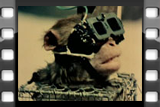
|
As important as the weapon itself, a significant portion of each operation was dedicated to gathering data on
the effects of the detonation on materials, vehicles, structures and animals. This testing was used to both
improve weapon design, and by understanding certain unique phenomena, increase their effectiveness. A great
deal of study was done to increase understanding of the ability to survive a nuclear attack. But with the
advent of high yield thermonuclear weapons in the early 1950's, it became apparent at least to the informed
that there was little chance of the general public surviving a large scale exchange.
|
|
Information Films
|
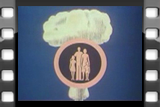
|
The U.S. monopoly on nuclear weapons was broken in 1949 when the Soviet Union tested its first nuclear
device, and the government realised that public fears about the posibility of nuclear war required
addressing. A number documentary films were commissioned designed to sell the concept to the public of a
survivable nuclear war. During the 1950's, both the U.S. and Soviet military realised that an all-out
strategic war was inconcievable; the concept of limited, tactical nuclear engagments with relatively low-
yield weapons became an important concept both politically and in justifying further weapons development.
These early films coincided with number nuclear tests and accompanying films by both the U.S. and the
Russians, involving large numbers of soldiers in an attempt to allay troop fears about nuclear weapons.
|
|
|
|
 |





